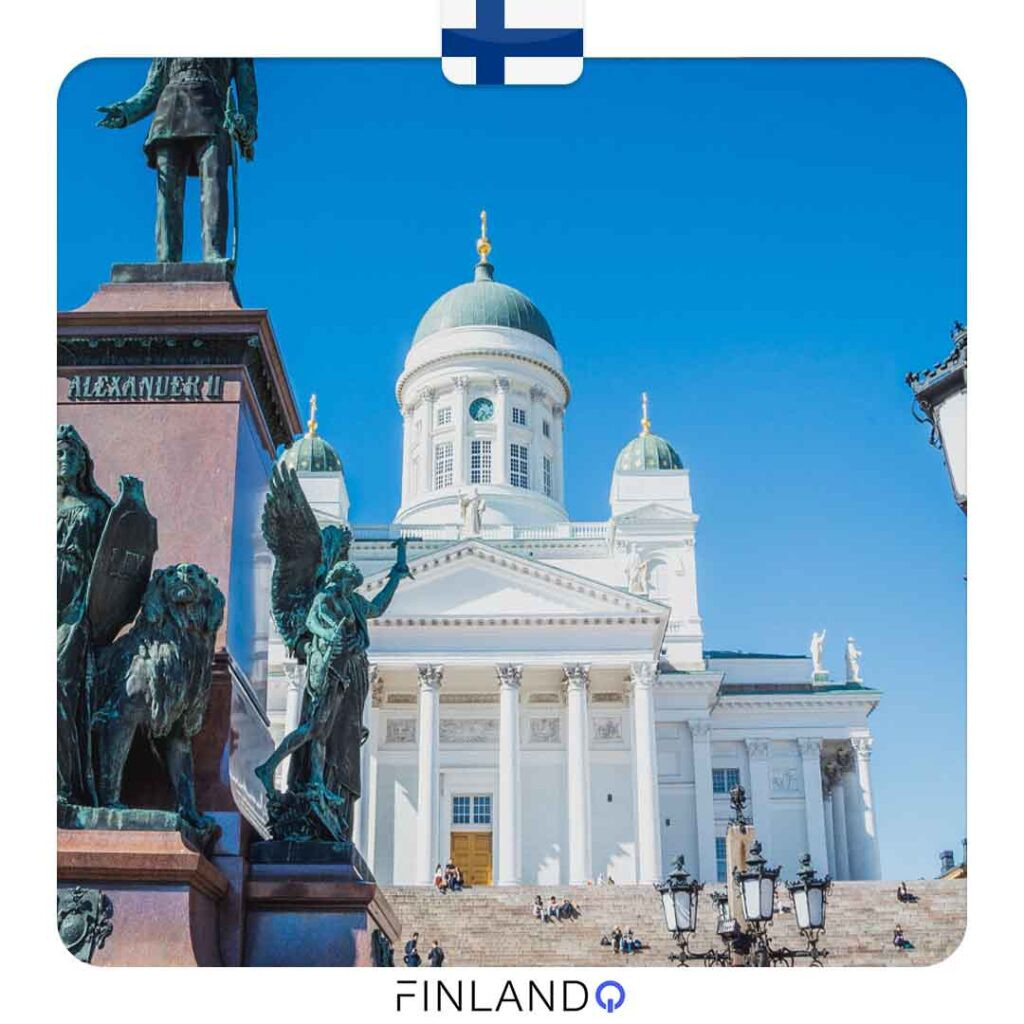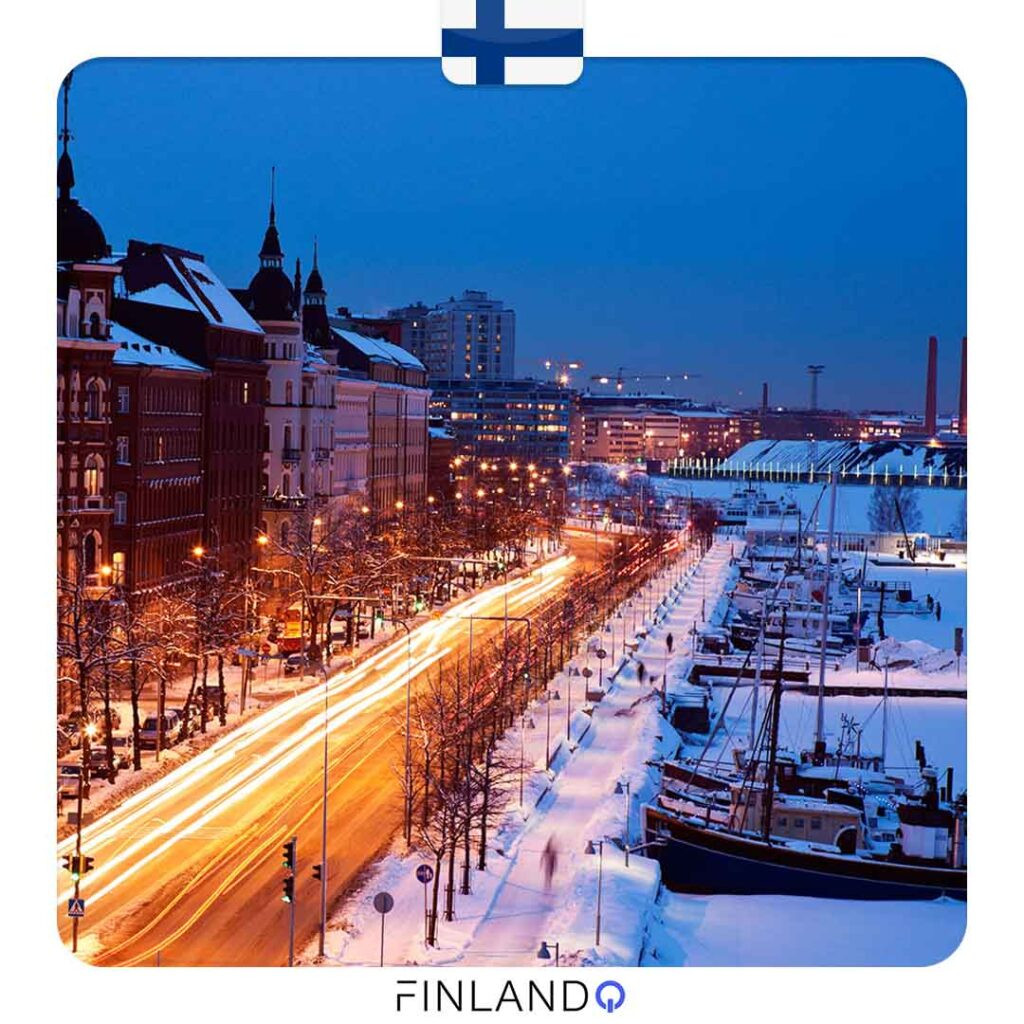Finland, a land of mesmerizing natural beauty, stretches from its southern lake region and the vibrant capital of Helsinki to the Arctic splendor of Northern Lapland. Often referred to as part of Scandinavia, this Nordic country beckons with pristine landscapes and a unique cultural identity. But Where Is Finland exactly? This article delves into the geographical heart of Finland, exploring its location, borders, and the many facets that define this captivating nation.
Finland occupies a substantial area of approximately 338,465 square kilometers, making it comparable in size to Germany. However, in stark contrast to its geographical counterpart, Finland is sparsely populated. Home to around 5.5 million people, Finland boasts one of the lowest population densities in Europe, contributing to its vast untouched wilderness and exceptionally high quality of life.
Finland’s journey to independence culminated on December 6, 1917, when it declared sovereignty from Russia. Later, in 1995, Finland embraced European integration by becoming a member of the European Union, marking a significant shift in its political and social landscape. Finnish is the primary language spoken, but Swedish also holds official status, spoken by a notable community comprising about 5% of the population.
Finland’s Scandinavian Location: A Nordic Highlight
Finland is geographically positioned as the northernmost country within Europe, a prime location that gifts it with extraordinary natural phenomena, most notably the ethereal Northern Lights. The country is dotted with diverse national parks, a vast majority of which are nestled within the Arctic region of Lapland. Winter is deeply woven into the Finnish way of life, offering a plethora of activities from world-class skiing to exhilarating dog sledding adventures. Even simple pleasures like scenic drives and hikes become unforgettable experiences amidst Finland’s breathtaking landscapes. Central to Finnish culture is the sauna, considered a sanctuary and a ritual practiced by many Finns at least weekly.
Delving into Finland’s Geographic Coordinates in Scandinavia
Nestled in Northern Europe, Finland’s geographical expanse covers 338,000 square kilometers. It shares land borders with several countries: Sweden to the west, Norway to the north, and Russia to the east. The Gulf of Finland laps at its southern shores. Forests are a defining feature of Finland’s terrain, blanketing over two-thirds of the country.
Of Finland’s total area, approximately 35,000 square kilometers are comprised of inland waters. An astounding number of lakes, exceeding 187,000, are scattered across the country, rightfully earning Finland the moniker “Land of a Thousand Lakes.” Adding to its aquatic identity, about 52,000 square kilometers of marine territory fall under Finnish jurisdiction. A significant portion, one-third of Finland, lies within the Arctic Circle, solidifying its status as one of the world’s northernmost nations.
Finland shares extensive borders with its neighboring countries:
- Russia: Approximately 1,340 kilometers, forming a significant eastern boundary.
- Norway: Roughly 736 kilometers to the north, marking its Arctic frontier.
- Sweden: 614 kilometers to the west, connecting it to the Scandinavian peninsula.
- Maritime Boundary: 1,250 kilometers, outlining its coastal and sea territories.
 Map showing the location of Finland in Northern Europe, highlighting its borders with Sweden, Norway, and Russia.
Map showing the location of Finland in Northern Europe, highlighting its borders with Sweden, Norway, and Russia.
Finland’s Population Distribution: North vs. South
Finland is home to approximately 5.5 million people, but its population distribution is markedly uneven. A striking population density disparity exists between the southern and northern regions. Southern Finland has a population density of 62.6 people per square kilometer, while northern Lapland is incredibly sparsely populated with only 1.8 people per square kilometer. The majority of Finns reside in the southern and central parts of the country, concentrated around major urban centers. The Helsinki metropolitan area alone accommodates around 1.6 million inhabitants. While Finland’s population is steadily growing, it remains considerably low compared to other European nations like Germany.
Time Zone in Finland: Eastern European Time
Finland operates on the Eastern European Time zone, closely aligned with its neighbors and just one hour behind Moscow. The standard time in Finland is Eastern European Time (EET), which is UTC+02:00. During summer, Finland observes Eastern European Summer Time (EEST), shifting to UTC+03:00. This puts Finland ahead of Coordinated Universal Time by two or three hours, depending on the season.
Finland’s Weather: Four Distinct Seasons
Finland is characterized by four distinct seasons, each offering a unique experience. Summer, spanning from June to August, is relatively short, with maximum temperatures reaching 25-30 degrees Celsius and average temperatures hovering around 18 degrees Celsius. While June and July can bring mosquitoes, effective repellents are readily available. Snowfall typically begins in December, but surprisingly, March often sees the heaviest snowfall, making it an ideal month for winter sports enthusiasts.
Official Languages of Finland: Bilingual Nation
Finland is officially a bilingual country. Finnish is the mother tongue for the vast majority, with 92.9% of the population considering it their first language. Swedish is also officially recognized, spoken natively by about 5.8% of the population. In Lapland, approximately 1,700 people speak Sami languages. Given that Finnish is a language spoken by only around 5 million people globally, many Finns are also proficient in other languages, particularly English, German, and other European languages.
Linguistic research suggests that the Finno-Ugric language family, to which Finnish belongs, originated around 5000 years ago near modern-day Lithuania. Interactions with Indo-European languages in this region contributed to the evolution of the languages spoken in present-day Finland. This linguistic history ultimately led to the development of the Finnish language as we know it today.
Currently, Finnish law designates municipalities as either Finnish-speaking, Swedish-speaking, or bilingual. A municipality is considered bilingual if a linguistic minority constitutes at least eight percent or 8,000 residents.
Key Historical Milestones in Finland’s Past
Finland’s history stretches back to around 8500 BC, marking the early inhabitation of the land. The original homeland of the Finnish people is believed to be in the eastern Urals or the Volga Bend region of present-day Russia. During the Middle Ages, both Sweden and Novgorod (Russia) vied for control over Finland. The Treaty of Nöteborg in 1323 ceded western, southern, and central Finland to Sweden, while eastern and northern regions temporarily fell under Russian influence.
Sweden’s dominance waned in the 18th century. During the Great Northern War (1700-1721), Russia occupied Finland. After a brief period of autonomy, Finland became part of the Russian Empire for approximately 200 years, starting in the mid-18th century. Following the Russian Revolution in 1917, Finland declared its independence, which was swiftly recognized by many nations.
Finland’s Role in World War II
Following the Molotov-Ribbentrop Pact between Germany and the Soviet Union in 1939, the Soviet Union expressed interest in acquiring parts of Finland. On November 30, 1939, the Soviet army launched an attack on Finland, initiating the Winter War (Soviet-Finnish War). The war concluded in March 1940 with the Moscow Peace Treaty, which saw Finland cede territory but maintain its independence.
In June 1941, after Germany broke the Molotov-Ribbentrop Pact, Finland aligned with Germany. During the Continuation War, Finland reclaimed lost territories and secured eastern Karelia. However, in September 1944, the Moscow Armistice led to the return of conquered territories. Finland then shifted its stance, committing to expel German forces from its territory, resulting in extensive destruction in Lapland. The last German troops departed Finland in April 1945.
Finland in the Post-War Era: Neutrality and EU Membership
Despite the turmoil of World War II, Finland preserved its independence. During the Cold War, Finland maintained neutrality while cooperating with the Soviet Union. The early 1990s brought a severe economic crisis, which Finland successfully overcame. In 1995, Finland joined the European Union, further integrating into the European landscape. The Finnish markka was replaced by the euro on January 1, 2002.
Finland’s Political System: Parliamentary Democracy
Finland has operated as a parliamentary democracy since gaining independence. A new constitution, enacted on March 1, 2000, remains in effect today. This constitution broadened the powers of the Parliament and Government while curtailing presidential authority.
The Finnish Parliament is a unicameral legislature with 200 representatives elected for four-year terms through proportional representation. Every Finnish citizen aged 18 and over has the right to vote in parliamentary elections.
The Prime Minister is appointed with the Parliament’s consent and, upon majority approval, forms a new government. As of recent updates, Petteri Orpo serves as the Prime Minister of Finland, leading a coalition government.
Major Cities in Finland: Urban Centers
While a significant portion of Finland remains rural, major cities are concentrated in the south and central regions. Key cities include:
- Helsinki: The capital and largest city (approximately 648,042 inhabitants).
- Espoo: Part of the Greater Helsinki area (pop. 283,632).
- Tampere: A major inland city (235,239 inhabitants).
- Vantaa: Also part of the Helsinki metropolitan area (228,166 inhabitants).
- Turku: A historic city on the southwest coast (191,331 inhabitants).
- Oulu: The largest city in northern Finland and fifth-largest nationally (over 200,000 inhabitants).
 Helsinki, the capital city of Finland, showcasing its urban landscape in the southern region of the country.
Helsinki, the capital city of Finland, showcasing its urban landscape in the southern region of the country.
Finnish Diet: Meals and Culinary Habits
Finns typically have breakfast around 7 AM, often a light meal consisting of coffee, milk, and perhaps a sandwich or cereal. Lunch is usually taken between 11 AM and 12 PM and is the main meal of the day. Lunch can be more substantial, especially compared to breakfast and dinner. Around 2 PM, a coffee or tea break is common. The workday typically ends around 4-5 PM, and dinner is eaten between 5-6 PM, usually a lighter meal like soup or a meat dish.
Economy of Finland: Industry and Trade
Finland has a mixed economy with both industrial and agricultural sectors. Industry and construction contribute approximately 45% of the gross national product, while agriculture and forestry account for about 11%. Finland’s economy is increasingly export-oriented. Key exports include wood, paper, pulp, forestry machinery, ships, tractors, dairy products, and electrical equipment.
Exports of goods and services constitute about 30% of the Finnish economy. Major industrial companies in Finland are involved in sectors such as oil refining, petrochemicals, wood processing, mechanical engineering, chemicals, shipbuilding, and electronics.
Industry in Finland: Key Sectors
Finland possesses mineral resources, including iron, copper, zinc, nickel, chromite, cobalt, vanadium, lead, graphite, and asbestos. It is a global leader in producing machinery and equipment for the pulp and paper industry. Shipbuilding is also a significant sector, with shipyards located in Turku, Helsinki, and Rauma, producing icebreakers, offshore platforms, and passenger and cargo ships.
The Finnish wood industry is substantial, encompassing wood processing, furniture production, and the paper industry. Despite having a relatively small percentage of global forest reserves, Finland is a major producer of wood products.
For those considering immigration to Finland, resources and expert guidance are available to assist with the process.
Finland, with its unique location, rich history, and vibrant culture, offers a compelling blend of Nordic charm and modern innovation. From its geographical position in Scandinavia to its thriving economy and distinctive way of life, Finland continues to captivate and intrigue.
